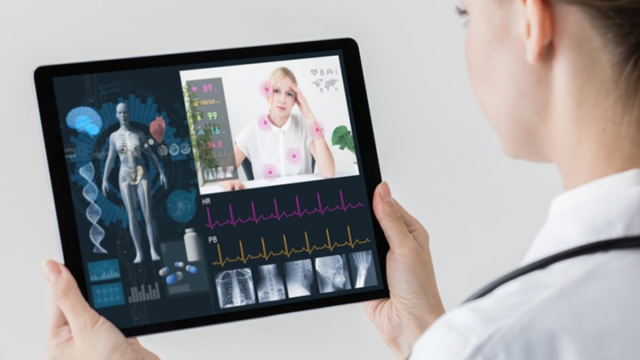If you’re a healthcare provider, there’s a good chance you’ve considered adding remote diagnostic delivery to your list of services.
And for a good reason – plenty of benefits come along with offering this type of care.
Here we have listed 5 of the most noteworthy advantages of diagnostics remote delivery.
1- Diagnostics Remote Delivery Reduces Physical Contact
Contents
In many cases, diagnostics remote delivery reduces unnecessary physical contact between patients and medical professionals, reducing the risk of COVID-19 contamination and protecting the health of both parties. As the world continues to grapple with pandemics on a global scale, technologies like RDD offer much-needed innovation that allows for better, more efficient diagnosis even in challenging situations. Therefore, it provides a critical solution for healthcare providers that reduces costs while improving patient outcomes.
2 – Diagnostic Remote Delivery Reduces Costs For HCPs
Remote diagnostic delivery is a cost-effective approach to healthcare. Healthcare providers can provide diagnostics services remotely by using advanced technologies such as artificial intelligence or computer applications. This helps reduce the cost of care by eliminating the need for costly physical examinations, extended hospital stays, or isolated laboratory analyses. It has been shown that when remote diagnostics are used instead of traditional methods, medical errors are significantly reduced, costs are lowered and quality of patient care is improved.
3 – RDD Can Improve Patient Satisfaction
Remote diagnostic delivery has revolutionized healthcare by allowing physicians to provide better and more efficient care. With traditional doctor’s visits, an exam must be conducted before the diagnosis is determined. This can take up valuable time for both the patient and the physician. Remote diagnostic delivery allows doctors to eliminate many steps involved in this process, enabling physicians to make a diagnosis sooner and with fewer resources. Additionally, remote diagnostic delivery can reduce patient anxiety as they don’t have to attend a medical facility physically.
4 – RDD Can Improve Patient Care
Diagnostics Remote Delivery also increases the accuracy of diagnoses by providing access to a larger variety of medical tests that may not have been available without access to remote technology. This enables doctors to make better-informed decisions when diagnosing medical conditions, which could ultimately lead to improved patient outcomes and satisfaction. All in all, it is clear that remote diagnostic delivery can provide improved patient care and satisfaction by increasing accuracy and reducing travel time for patients.
5 – Improved Care Coordination
RDD can improve patient care coordination by allowing specialists to provide diagnoses and recommendations without the need for in-person visits. This can save time and money, and it can also improve patient outcomes by providing timely access to care. In addition, RDD can help to ensure that patients receive the most appropriate care for their condition by connecting them with the right specialist. For example, a patient with a rare condition may benefit from being connected with a specialist who is familiar with the condition.
Conclusion: Remote Diagnostic Delivery Is The Future Of Healthcare
Remote diagnostic delivery can potentially improve healthcare providers’ efficiency and patient care. By reducing costs and improving patient satisfaction, remote diagnostic delivery can play a major role in reforming the healthcare system. Healthcare providers should consider implementing remote diagnostic delivery into their operations to reap these benefits.


